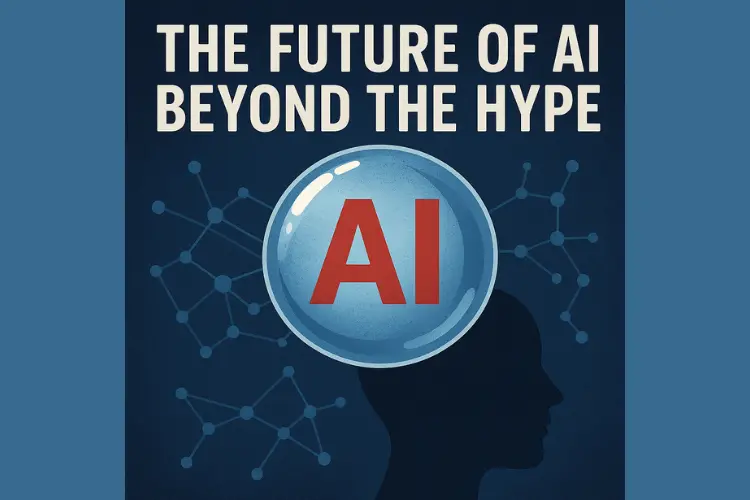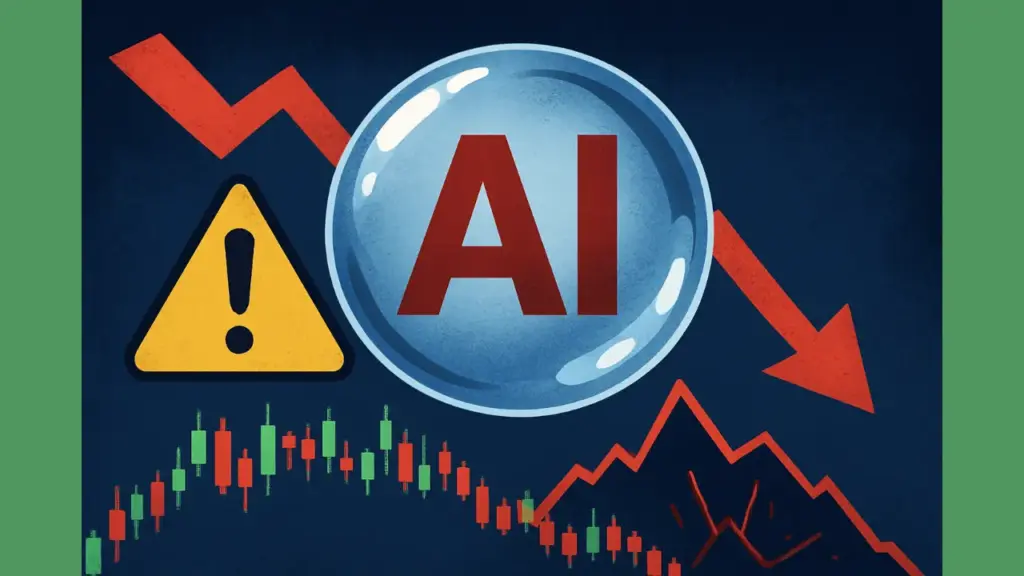Introduction
Artificial intelligence is dominating conversations in the tech and business world. From ChatGPT to AI-driven analytics, the technology seems unstoppable. Startups are attracting billions in funding, and investors are betting big on what many see as the future of innovation.
But beneath the hype, concerns are rising. Analysts warn that the current AI boom shares similarities with the dot-com era of the late 1990s. Back then, inflated valuations and bold promises ended in a painful market crash. The same risks may be building in today’s AI market.
This blog explores the signs of an AI bubble, what it could mean for businesses and investors, and how to make smarter decisions in uncertain times.
The AI Gold Rush: Why the Market Is Heating Up
AI is often described as a transformative force, capable of reshaping industries. But what is fueling the frenzy?
Soaring Valuations
Companies like OpenAI and Anthropic are valued in the tens of billions, often before building sustainable revenue models.
Investment Mania
Venture capitalists are pouring money into AI startups, afraid of missing out on “the next big thing.”
Rapid Adoption
Millions of users signed up for AI chatbots and tools in record time. This has reinforced the belief that AI will dominate every sector.
History Repeats Itself
The dot-com bubble also grew on massive funding, skyrocketing valuations, and media hype. That ended in collapse, wiping out countless startups.
Red Flags in the AI Industry
Despite its promise, the AI industry shows warning signs that shouldn’t be ignored:
1. Overblown Valuations
Startups are valued like tech giants, but many struggle to generate steady revenue. High operating costs, such as running data centers, make profitability a challenge.
2. Pricing and Usage Limits
AI companies are tightening free usage policies and forcing users toward paid plans. This frustrates individuals and businesses that expected long-term free access.
3. Exaggerated Promises
Bold claims—like AI curing diseases or replacing entire workforces—often overshoot reality. When expectations don’t match results, disappointment follows.
4. Infrastructure Challenges
AI depends on GPUs, servers, and massive amounts of electricity. Even global leaders face pressure to keep up with these demands, raising questions about scalability.
Is the Bubble About to Burst?
Many experts believe the AI market will face a correction, if not a crash.
- Investor Pressure: Valuations can’t rise forever. If companies fail to meet targets, confidence will fall.
- Overcrowding: Too many startups are chasing the same AI opportunities, which creates oversupply.
- Early Failures: Smaller AI firms are already shutting down or changing direction due to lack of revenue.The Future of AI Beyond the Hype
This doesn’t signal the end of AI. Just like the internet survived the dot-com collapse, AI will continue to grow. But inflated expectations may give way to more cautious, realistic growth.
What This Means for Your Business and Finances
The potential AI bubble affects more than just investors. Businesses must prepare for volatility too.
Investor Risks
Over-investing in unproven AI startups could mean heavy losses. Balanced portfolios remain essential.
Business Dependence
Relying entirely on third-party AI platforms can create problems if those platforms change pricing or shut down.
Smarter Adoption
Instead of betting everything on AI, businesses should use it for clear, practical tasks. Examples include automating customer service or improving data insights.
Value of a Fractional CTO
A fractional CTO helps startups adopt AI wisely. They provide technical direction without the cost of a full-time executive. With their guidance, companies can avoid unnecessary risks and integrate AI where it truly adds value.
The AI industry won’t collapse entirely. Instead, it will shift from hype-driven growth to value-driven results. The real winners will be companies that solve real-world problems.
Promising directions include:
- Healthcare: Early disease detection and better treatment research
- Finance: Fraud detection, automation, and risk management
- Logistics: Supply chain efficiency and predictive planning
- Education: Personalized learning and skill development
AI’s long-term future is solid, but the strongest companies will be those that deliver measurable results rather than lofty promises.

Conclusion
The AI boom carries incredible potential—but also familiar risks. We see inflated valuations, aggressive pricing, and bold claims that may not hold up. For businesses and investors, the right move is caution. Focus on realistic opportunities, avoid hype-driven decisions, and diversify investments.
Working with a fractional CTO can help startups navigate this complex environment. With expert advice, businesses can adopt AI safely and effectively while avoiding costly mistakes.
Is today’s AI industry headed for a 1999-style collapse, or will it fuel the next big revolution? The truth likely lies in between. Sustainable growth depends on balancing innovation with reality.
At StartupHakk, we believe the future of AI is bright—but only for those who approach it with strategy and discipline. The hype may fade, but real value will last.




